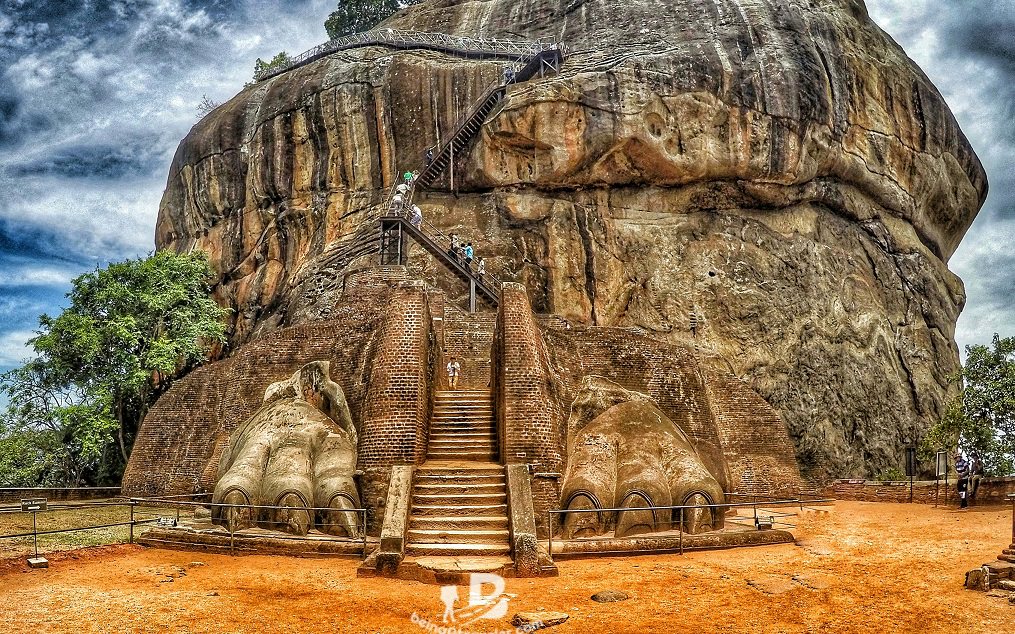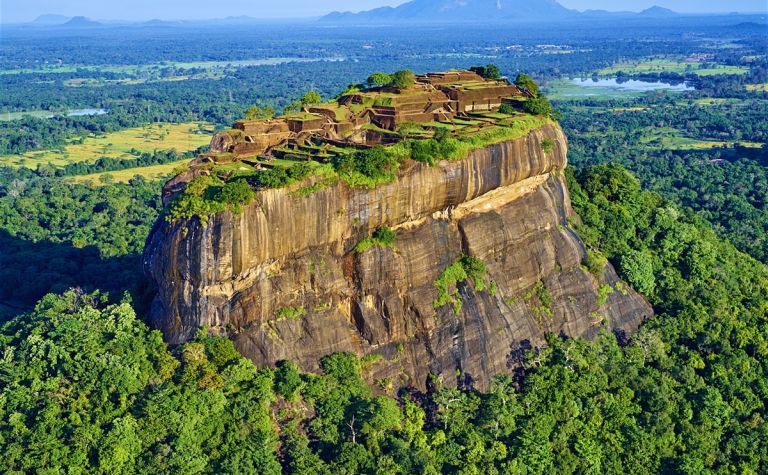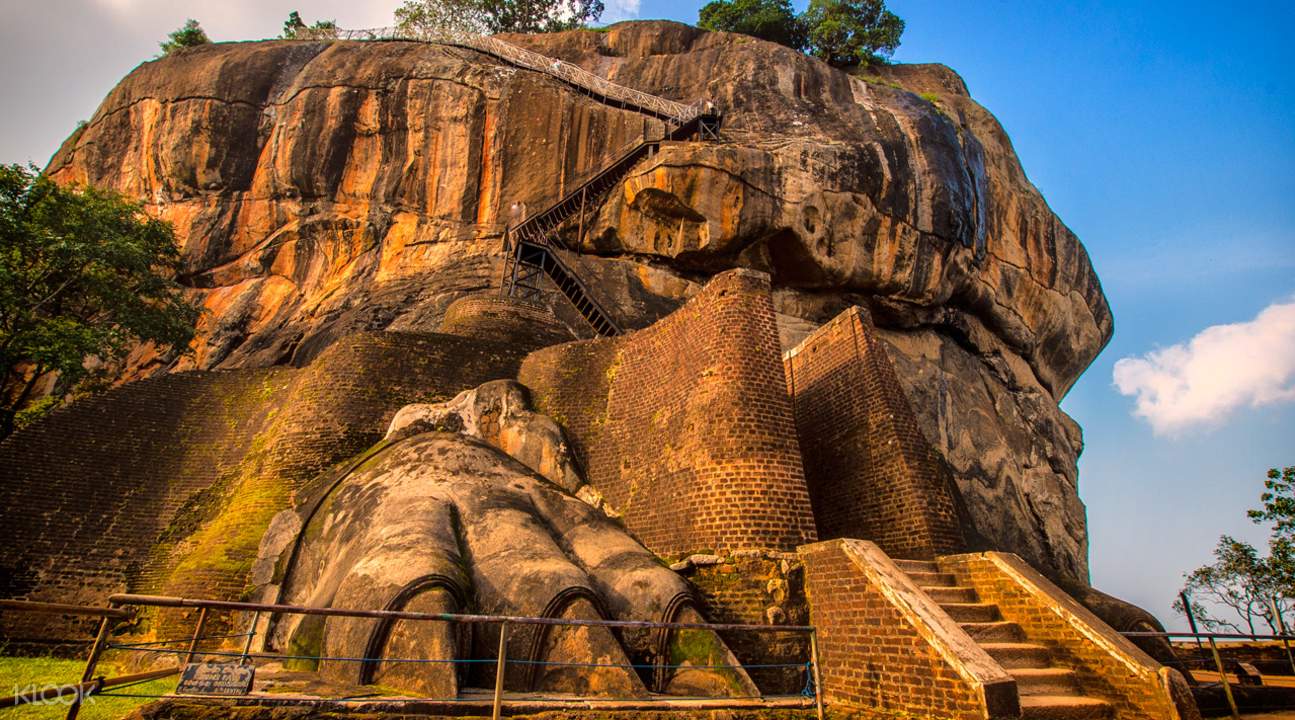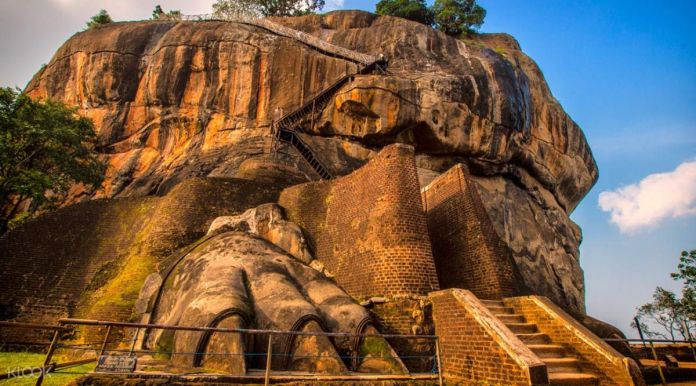Who on this planet doesn’t like travelling and exploring hidden spots all over the world? Be it dreamy European countries, or Asian party hubs like Thailand & Bali, we’d want to explore the entire globe! But how about if we tell you there’s a hidden spot way closer to India which is often referred to as the ‘eighth wonder of the world’? Intrigued, are we? Yes! We are talking about the ancient ‘Sigiriya Lion Fortress’ in Sri Lanka. Standing tall at a height of 200 meters (660 ft) and built in the 5th century, this ‘Lion Rock’ is really as wonderful as it sounds! Read on to know more.
The legend of king Kashyapa

Image Source: backpacker 
Image Source: being traveller
Sigiriya was built by the fifth-century king Kashyapa, who chose this site to be his capital. He even decided to build a palace on top of this giant rock. King Kashyapa secured his power by assassinating his own father and expelling his brother. But his brother, Moggallana, took his revenge and defeated Kashyapa. Thereafter, Moggallana reigned Sigiriya and it served as a Buddhist monastery complex till the 14th century. In fact, reports suggest that the fortress was swallowed by the forest, only to be rediscovered by the British in the 19th Century.

What All You Can See There
The major attraction is the fortress itself. It is picturesque and while you climb up to the summit it brings many surprises. You will witness paintings, murals, claws of a lion, and more here.
The Mirror Wall

image source: newsfirst 
Image source: pinterest
Originally, the fortress had a wall so well-polished that the king could see his clear reflection. It is made of brick masonry and is covered in highly polished white plaster. In fact, it has scribbles from people dating back to the 8th century! The wall also has spiral stairs along with it which leads to the frescoes.
Lion Rock

Image Source: Klook 
Image Source: Ancient Pages
If you look closely, you can see the paws of the lion built at the bottom of the rock. The structure has crumbled and all that’s left are the huge paws of the lion sculpture.
Murals

Image Source: Pinterest 
Image Source: Hindu
The main attraction on the mountain climb is the frescoes of female figures. It’s even said that this fortress probably has the largest graffiti in the world- which would have covered the western face of the rock. That is around 140 metres long! Sadly, most of it is lost now.
Water Gardens

Image Source: Matheews Willam 
Image Source: Trip Advisor
The water here is collected in four L-shaped pools. King Kasyap was very fond of water and its presence in the gardens in the form of fountains and pools is very evident. Further beyond the octagonal pool, on a higher level, there is the boulder garden which consists of several large boulders linked by winding pathways.
How To Reach Here
You can take a flight from India to Colombo International Airport. From Colombo, you can take a bus, or book a cab to reach here. It is roughly 4 hours by road and 1.5 hours by train.
(Featured Image Source: klook)




